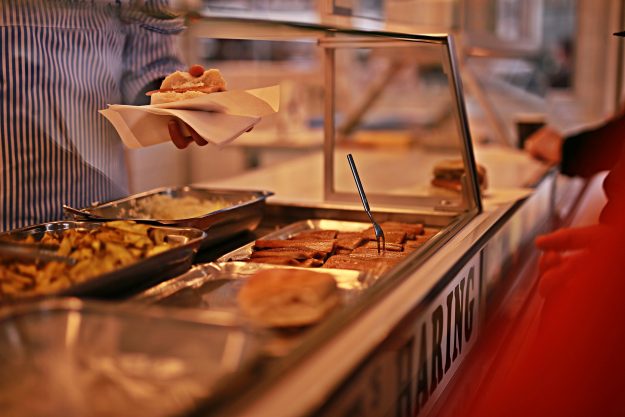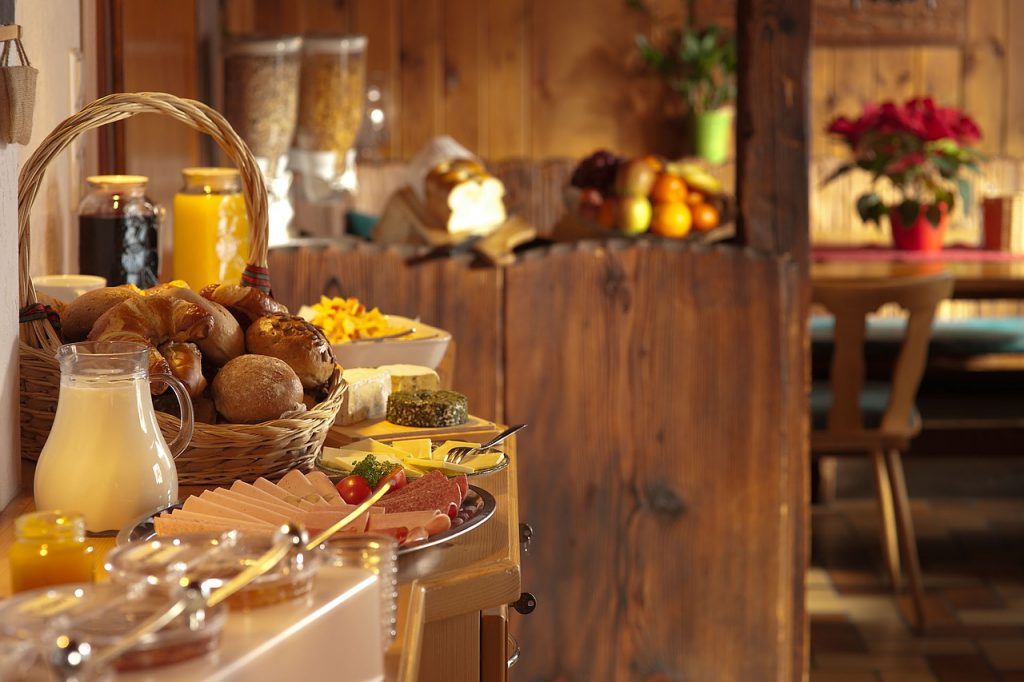
Use Case: Intelligent Catering
What’s the issue?
Increasing demands and varying expectations from customers at the campus canteen, combined with business needs to operate efficiently, create a challenging environment for the staff and management of these essential facilities. How do catering outlets constantly improve their service whilst also offering interesting and varied menus in a cost effective way? Is everyone able to choose something that matches their preferences, including eating healthily or for special dietary requirements? And how does the canteen cope with all this information, make a profit and encourage people to come back?
What could be done?
Knowing what stock is available and what is being used is critical to efficient supplies on the shelves and counters. A range of methods can help monitor stock and sales including counting people entering, sensors that detect food removed from the shelf, barcode scanning and image recognition. Automatic re-ordering can replace items regularly, and data can be analysed to predict demand in different circumstances and adjust deliveries and production in anticipation. Such techniques could also help minimise waste, perhaps by putting out special offers where stock levels are higher than necessary on disposable items.
Once-only purchases are different from repeat orders, and customer feedback on items can provide more confidence about re-stocking. Feedback could be collected via a mobile app, and indeed selection, ordering and payment could also be combined into app features, allowing customers to pre-order food for delivery on arrival and rate the food afterwards. Individual preferences such as dietary requirements, favourite foods or healthy eating targets could be automatically matched to menu items, providing tailored suggestions on what to eat.
Integrating other data sets moves from smart catering to intelligent catering. Access to data on the location and flow of people in and around the canteen can help estimate likely changes in footfall, as can timetabling data showing when lectures, conferences or events finish. Digital maps of campus can combine with timetabling to indicate where classes of students are currently, and closeness to catering outlets. Similarly, location and timing of events and conferences can influence likely demand for food. Attendance data could complement flow and location to give a picture of how many people are on campus (or parts of campus) at any time, as could data from car park in and out flow.
Predicting demand (and responding more quickly) can help manage stock and menu choices more effectively. Various factors could influence demand for different dishes, including changes in the weather – for example are more salads likely to be requested on a hot day, and soup on a cold day? Using not only the weather forecast, but hourly changes in weather and temperature data, could allow additional preparation or re-stocking of certain dishes, and even promote them via digital screens or apps on mobile devices. Over time, historical data and trends can be analysed and used to predict how likely changes in location and flow of people are to result in food orders, or even which types of events drive demand for which foods.

What examples are there?
Tablets and mobile phones are now seen commonly in the hands of restaurant staff for taking orders, sending the information immediately to the kitchen. Online ordering apps such as https://ordoo.co.uk/also exist that send orders to a cafe or restaurant in advance, and allow remote bill paying and electronic receipts, aiming to beat the queues and provide tailored rewards. Some apps also support splitting the bill with others in your group, saving time for waiting staff and providing detailed nutritional information to support different requirements. Others use RFID technology to locate the customers’ tables to deliver their order.
McDonalds is one of several fast food chains that provides a click and collect service through their own app. Customers preorder using the app then scan the QR code at the front of the store. This notifies the restaurant that you’ve arrived so they can start preparing your order. Other services are available that use GPS to detect your proximity to trigger food preparation. Take away ordering apps also track the progress of your order so you can see when it is being prepared, cooked and delivered. Others such as https://finedinemenu.co.uk/offer a digital menu that tracks browsing behaviour and collects feedback.
Various strategies are used in stocking and supply chain processes, with RFID transmitters and GPS systems monitoring stock as it passes through the logistics of getting to the store. Inside the cafe, sensors connected to refrigerators, freezers and ovens monitor and notify levels, particularly when safe limits are reached or cooking times are completed. This can help to reduce staff effort in manually monitoring equipment and food preparation. This also extends to humidity, vibration and other environmental factors that impact on the shelf life and hygiene of foods. In isolation this data can ease the use of individual pieces of equipment, but combined with information on sales, orders and stock purchases, staffing and resources, business intelligence can be gleaned. The data is analysed to streamline productivity, enhance safety and security, maximise resources utilisation, including energy and waste reduction, and provide input to marketing.
What about ethical and other issues?
Various sources and types of data are involved, depending on the strategy used. Some of these are generic environmental data such as the weather, or anonymised data on people flow. Data on personal preferences, dietary requirements or healthy eating plans could be considered sensitive in the same way as location of individuals, so clarity on sharing of data and consent is important. Equally, there would need to be confidence that menu recommendations are made for the benefit of the consumer, not just to maximise profit.
Who needs to be involved?
Depending on the type of data, access to other systems may be needed, such as weather forecasting, suppliers’ stock systems, lecture or event timetabling. Some data may be available locally through environmental sensors, such as temperature or humidity externally, and operating data on specific pieces of kitchen equipment – assuming equipment manufacturers provide such sensors that can be securely managed. Other data can be accessed through open APIs such as weather data, although more specific data currently may involve subscriptions. Ingredient suppliers would be a critical partner in logistical processes, and IT and estates departments along with academic services would need to be involved in integrated analytics systems. Personal data would require app-specific sharing permissions from the individual.

